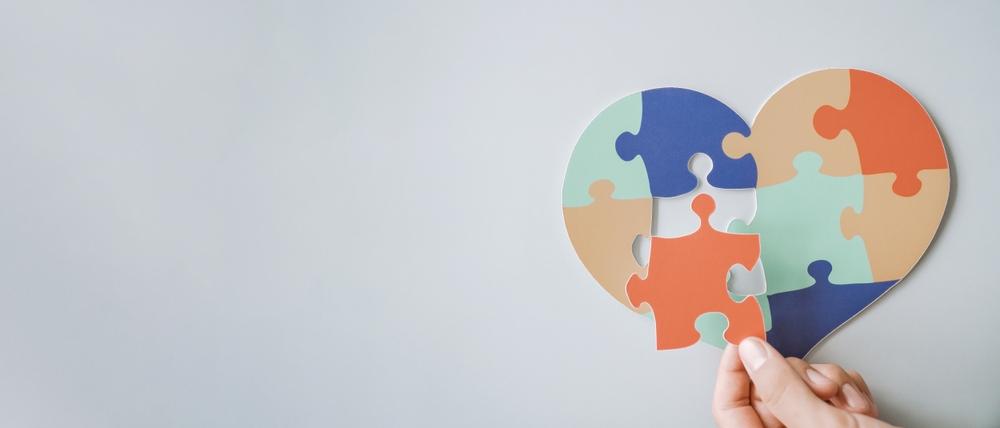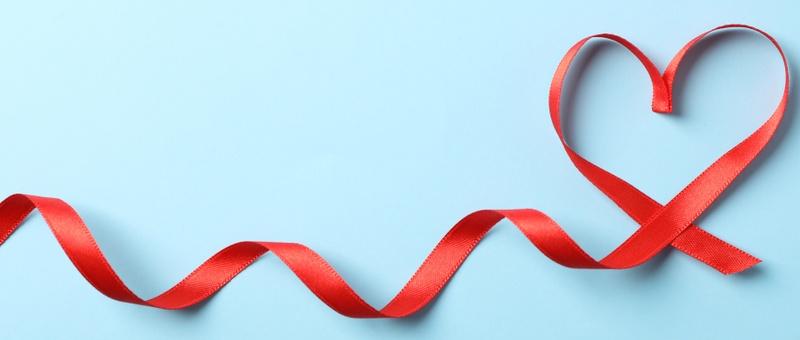
Anatomy of the heart and blood vessels
Peer reviewed by Dr Jacqueline Payne, FRCGPLast updated by Dr Oliver Starr, MRCGPLast updated 31 May 2018
Meets Patient’s editorial guidelines
- DownloadDownload
- Share
- Language
- Discussion
The heart is a muscular pump that pushes blood through blood vessels around the body. The heart beats continuously, pumping the equivalent of more than 14,000 litres of blood every day through five main types of blood vessels: arteries, arterioles, capillaries, venules and veins.
In this article:
Continue reading below
What are the heart and blood vessels?
Blood vessels form the living system of tubes that carry blood both to and from the heart. All cells in the body need oxygen and the vital nutrients found in blood. Without oxygen and these nutrients, the cells will die. The heart helps to provide oxygen and nutrients to the body's tissues and organs by ensuring a rich supply of blood.
Not only do blood vessels carry oxygen and nutrients, they also transport carbon dioxide and waste products away from our cells. Carbon dioxide is passed out of the body by the lungs; most of the other waste products are disposed of by the kidneys. Blood also transports heat around your body.
Where are the heart and blood vessels found?
Normal heart detail

The heart is a fist-sized organ which lies within the chest behind the breastbone (sternum). The heart sits on the main muscle of breathing (the diaphragm), which is found beneath the lungs. The heart is considered to have two 'sides' - the right side and the left side.
The heart has four chambers - an atrium and a ventricle on each side. The atria are both supplied by large blood vessels that bring blood to the heart (see below for more details). Atria have special valves that open into the ventricles. The ventricles also have valves but, in this case, they open into blood vessels. The walls of the heart chambers are made mainly of special heart muscle. The different sections of the heart have to squeeze (contract) in the correct order for the heart to pump blood efficiently with each heartbeat.
Continue reading below
What do the heart and blood vessels do?
The heart's main function is to pump blood around the body. Blood carries nutrients and waste products and is vital to life. One of the essential nutrients found in blood is oxygen.
Heart - lung circulation

The right side of the heart receives blood lacking oxygen (deoxygenated blood) from the body. After passing through the right atrium and right ventricle this blood is pumped to the lungs. Here blood picks up oxygen and loses another gas called carbon dioxide. Once through the lungs, the blood flows back to the left atrium. It then passes into the left ventricle and is pumped into the main artery (aorta) supplying the body. Oxygenated blood is then carried though blood vessels to all the body's tissues. Here oxygen and other nutrients pass into the cells where they are used to perform the body's essential functions.
A blood vessel's main function is to transport blood around the body. Blood vessels also play a role in controlling your blood pressure.
Blood vessels are found throughout the body. There are five main types of blood vessels: arteries, arterioles, capillaries, venules and veins.
Arteries carry blood away from the heart to other organs. They can vary in size. The largest arteries have special elastic fibres in their walls. This helps to complement the work of the heart, by squeezing blood along when heart muscle relaxes. Arteries also respond to signals from our nervous system, either tightening (constricting) or relaxing (dilating).
Main arteries of the body

Arterioles are the smallest arteries in the body. They deliver blood to capillaries. Arterioles are also capable of constricting or dilating and, by doing this, they control how much blood enters the capillaries.
Capillaries are tiny vessels that connect arterioles to venules. They have very thin walls which allow nutrients from the blood to pass into the body tissues. Waste products from body tissues can also pass into the capillaries. For this reason, capillaries are known as exchange vessels.
Groups of capillaries within a tissue reunite to form small veins called venules. Venules collect blood from capillaries and drain into veins.
Veins are the blood vessels that carry blood back to the heart. They may contain valves which stop blood flowing away from the heart.
Blood flow through the body

How do the heart and blood vessels work?
The heart works by following a sequence of electrical signals that cause the muscles in the chambers of the heart to contract in a certain order. If these electrical signals change, the heart may not pump as well as it should.
The sequence of each heartbeat is as follows:
Cross-section diagram of the heart describing a heartbeat

The sinoatrial node (SA node) in the right atrium is like a tiny in-built 'timer'. It fires off an electrical impulse at regular intervals. (About 60-80 per minute when you are resting and faster when you exercise.) This controls your heart rate. Each impulse spreads across both atria, which causes them to contract. This pumps blood through one-way valves into the ventricles.
The electrical impulse gets to the atrioventricular node (AV node) at the lower right atrium. This acts like a 'junction box' and the impulse is delayed slightly. Most of the tissue between the atria and ventricles does not conduct the impulse. However, a thin band of conducting fibres called the atrioventricular bundle (AV bundle) acts like 'wires' and carries the impulse from the AV node to the ventricles.
The AV bundle splits into two - a right and a left branch. These then split into many tiny fibres (the Purkinje system) which carry the electrical impulse throughout the ventricles. The ventricles contract and pump blood through one-way valves into large arteries:
The arteries going from the right ventricle take blood to the lungs.
The arteries going from the left ventricle take blood to the rest of the body.
The heart then rests for a short time (diastole). Blood coming back to the heart from the large veins fills the atria during diastole:
The veins coming into the left atrium are from the lungs (full of oxygen).
The veins coming into the right atrium are from the rest of the body (depleted of oxygen).
The sequence then starts again for the next heartbeat. The closing of the valves in the heart make the 'lub-dub' sounds that a doctor can hear with a stethoscope.
If you exercise, your body tissues need more oxygen and will produce more carbon dioxide. This means your heart must speed up to meet those needs. How fast your heart beats (your heart rate) is controlled in a number of different ways. The brain controls the heart rate through the nervous system. A special part of the brain, called the medulla oblongata, receives information from many different systems of the body. The brain then co-ordinates the information and either sends signals to increase or decrease the heart rate, depending on what is necessary.
Even before physical activity begins, your heart may speed up in anticipation of what is to come. This is because a special part of the nervous system sends signals to the medulla. As physical activity starts, cells of the nervous system which monitor changes in the body (receptors) send signals about the position of your muscles to the brain. This can increase your heart rate.
The body also has other receptors which measure levels of chemicals, such as carbon dioxide, in your blood. If levels of carbon dioxide rise, signals are sent via the nervous system to the brain. The brain then sends electrical signals to the heart via nerves to speed it up. The signals cause the release of hormones which make the SA node fire more often. This means the heart beats more frequently. The brain can also send signals to the heart to slow it down.
Other hormones, such as those from the thyroid gland, can also influence your heart rate, as can certain substances found in your blood.
The most important function of the cardiovascular system (the heart and blood vessels together) is to keep blood flowing through capillaries. This allows capillary exchange to take place. Capillary exchange is the process of nutrients passing into the body's cells and waste products passing out. Blood vessels are uniquely designed to allow this to happen.
Blood leaves the heart in the larger arteries. These vessels help to propel blood, even when the heart is not beating, because they have elastic walls which squeeze the blood in them. Arterioles are smaller than arteries and provide the link between the arteries and the capillaries. Capillaries allow nutrients and waste products to move in and out of the bloodstream. Venules take blood from the capillaries to the veins. Veins take blood back to the heart. This constant circulation of blood keeps us alive.
Your blood vessels also play a part in the regulation of your blood pressure. Certain chemicals in the body can cause our blood vessels either to tighten (contract) or to relax (dilate). Signals from our nervous system can also make our blood vessels relax or contract. These changes cause a change in the size of the lumen of the vessel. This is the space through which blood flows. In simple terms, constriction of blood vessels causes an increase in blood pressure. Dilation of blood vessels causes a decrease in blood pressure. However, blood vessels don't just control blood pressure by themselves. Your body controls blood pressure using a complicated system. This involves hormones, signals from your brain and nervous system and the natural responses of your blood vessels.
Continue reading below
The blood supply to the heart
Coronary arteries

Like any other muscle, the heart muscle needs a good blood supply. The coronary arteries take blood to the heart muscle. These are the first arteries to branch off the large artery (aorta) which takes blood to the body from the left ventricle.
The right coronary artery mainly supplies the muscle of the right ventricle.
The left coronary artery quickly splits into two and supplies the rest of the heart muscle.
The main coronary arteries divide into many smaller branches to supply all the heart muscle.
Some disorders of the heart and blood vessels
Patient picks for Heart health

Heart health and blood vessels
How healthy is your heart?
Whilst your heart is as old as you are - it does have its own age, which is a sign of how healthy you are. Here we show a calculator which compares your real age to your heart age and we show how you can can turn back the clock on heart attack risks by improving your lifestyle.
by Lawrence Higgins

Heart health and blood vessels
6 workday habits that keep your heart healthy
It's one thing knowing that you could be doing more to keep your heart healthy - and another entirely finding the time. Whether you're a 9-to-5 desk worker, a long-distance commuter, or a parent juggling it all, we've assembled 6 heart healthy habits for you to slot into your busy workday schedule.
by Victoria Raw
Continue reading below
Article history
The information on this page is peer reviewed by qualified clinicians.
31 May 2018 | Latest version

Ask, share, connect.
Browse discussions, ask questions, and share experiences across hundreds of health topics.

Feeling unwell?
Assess your symptoms online for free
Sign up to the Patient newsletter
Your weekly dose of clear, trustworthy health advice - written to help you feel informed, confident and in control.
By subscribing you accept our Privacy Policy. You can unsubscribe at any time. We never sell your data.